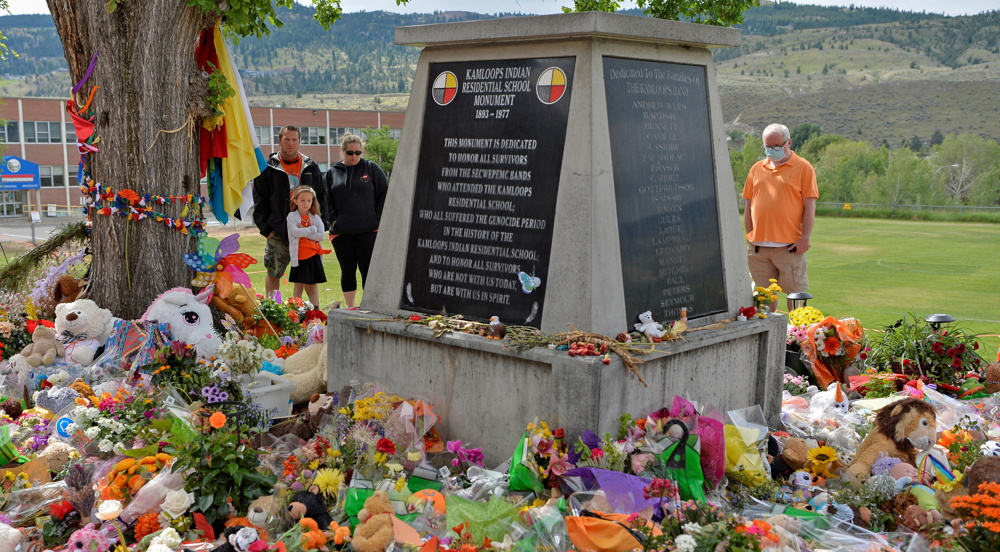
In a detailed bilingual report (Persian and English) published on Wednesday, Iran's top human rights body reviewed violations of women’s rights and violence against female citizens, particularly Indigenous ones, in the North American country.
In its opening part, the report, titled “Discrimination, Inequality & Violence Against Women in Canada”, cited the United Nations Special Rapporteur on violence against women, its causes and consequences, Dubravka Simonovic, who, during a visit to Canada in April 2018, urged Ottawa to urgently rescind all remaining discriminatory provisions in Indian Act and any other discriminatory national laws and practices against Indigenous women and girls.
The so-called Act is a paradoxical document that has enabled trauma, human rights violations and social and cultural disruption for generations of Indigenous peoples.
“For decades, First Nations women and their descendants have faced sex-based discrimination that has been perpetuated by these provisions, constituting a violation of international and national gender equality standards,” said the UN expert at the time.
Citing new data released by Statistics Canada in May, the report said that more than six out of 10 Indigenous women reported experiencing physical or sexual assault at some point in their lifetime.
This is while Ottawa has yet to release a federal action plan to address violence against Indigenous women and girls.
Canada's 1.7 million indigenous citizens, nearly five percent of the population, mostly live in isolated communities where poverty, high unemployment and high risk of suicide are chronic problems.
According to the report, in 2019, only six percent of sexual-assault incidents experienced by Canadians 15 years of age and older had been reported to the police.
Sexual assaults account for one-third of an overall five percent increase in reports of violent crime, with homicides, criminal harassment, hate crimes, and firearm offenses also on the rise. The vast majority (96 percent) of detected victims of human trafficking were women and girls. In all, one in four (25 percent) victims was under 18.
Last year, a thorough 404-page report on sexual violence in the Canadian armed forces (CAF), called the Arbour report after its author, pinpointed the many failures of the CAF over the years to address misogyny, discrimination, sexual violence and trauma experienced predominantly by female members of the military.
“One of the dangers of the model under which the CAF continues to operate is the high likelihood that some of its members are more at risk of harm, on a day-to-day basis, from their comrades than from the enemy,” said Louise Arbour, a former justice of the Supreme Court of Canada.
About a quarter of the women serving in the Canadian military say they have been sexually assaulted during their military careers.
The report by Iran's High Council for Human Rights further said that violence against Indigenous peoples in Canada reflects the traumatic and destructive history of colonialization that impacted and continues to impact Indigenous families, communities, and Canadian society overall.
First Nations, Inuit, and Métis women across the country are still experiencing higher rates of violence and sexual assault than non-Indigenous women, it noted, adding that more than six in 10 Indigenous women (63 percent) experienced either physical or sexual assault in their lifetime.
The report also touched on the issue of women in Canadian prisons, saying that the number of women in federal jails has jumped significantly in the North American country in the last three decades.
Citing figures from Canada's Department of Justice in 2018, it said that from 2006 to 2016, the number of non-Indigenous women in custody increased by 44 percent.
"Currently, nearly 50 percent of the women in federal prisons are indigenous. Less than five percent of Canadians are indigenous, but they are half of the women serving sentences in federal prisons.
Indigenous women also spend more time in solitary confinement and have a harder time qualifying for parole. Indigenous people receive higher security classifications and lower reintegration scores than non-Indigenous inmates.," the report added.
Furthermore, women make up 27 percent of the overall homeless population in Canada, and on any given night in Canada, 6,000 women (often with children) seek refuge in emergency shelters, it said, warning that about 75 percent of homeless women struggle with disorders such as anxiety, depression, and schizophrenia.
As for domestic violence, the Canadian Centre for Justice and Community Safety Statistics reveals that women are 3.5 times more likely to experience violence than men, with 536 women vs. 149 men per 100,000 population, the report added, saying that the rate of domestic violence in men is significantly increasing between 2018 and 2019.
"In 2021, police reported 788 homicides, 29 more than in 2020, representing a three percent increase nationwide. In Canada, in 2020 alone, 160 females were victims of violent homicide, which averages to a woman or girl being killed every 2.5 days.
Aboriginal women are at a higher risk of experiencing violence than non-Aboriginal women. Making up less than five percent of Canada’s population, Indigenous women make up 16 percent of femicide victims," it further said.
Canada has always been under fire from some Indigenous Peoples’ human rights societies for providing the possibility of continuous violation of aboriginal women’s rights to life, freedom, and security.
It is also severely criticized by human rights groups for the forced and coerced sterilization of Indigenous women, the militarization of Indigenous lands, the criminalization of Indigenous human rights defenders, and the over-incarceration of Indigenous offenders across the country.
Moreover, Canada has a dark past in dealing with the children of its Indigenous population. the country's residential school system forcibly separated more than 150,000 First Nations children from their families between 1831 and 1996.
Many of the children separated from their homes by the church’s school system were subjected to abuse, rape, and malnutrition. In 2008, the Canadian government formally apologized.


No comments:
Post a Comment